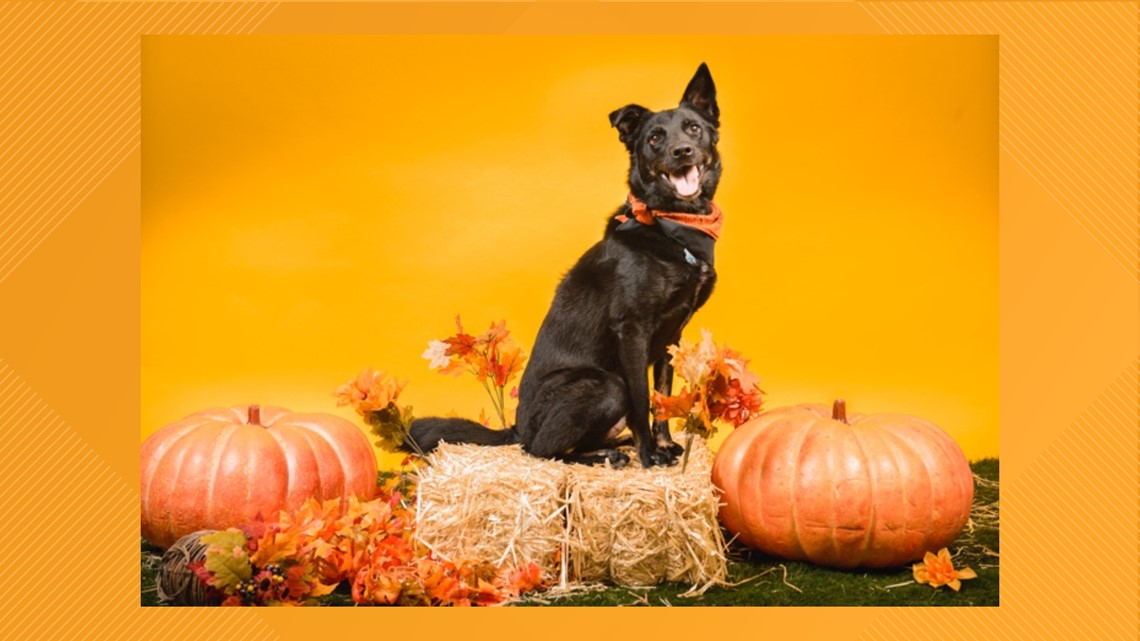
It’s October!
Which means Thanksgiving and Halloween are right around the corner.
Let’s brush up on some safety tips for including your pet in the fall holiday fun:
- Do NOT feed your pet human food and treats meant for human consumption. Some ingredients found in these delicious treats are poisonous for our pets. For example:
- Some of the fattier foods that we feast on during Thanksgiving can be hard for our pets to digest, potentially leading to a condition known as pancreatitis. Ensure that you are giving lean cuts of meat (avoid sharing the turkey skin with your pet), and in small quantities.
- Be aware that many foods that are healthy for people are poisonous to pets – including onions, raisins and grapes. Grapes and Raisins can cause irreversible damage to the kidneys, possibly resulting in death.
- Macadamia nuts can cause your pet to experience severe illness. Signs include vomiting, weakness, depression, drunken gait, joint/ muscle pain and joint swelling
- Chocolate can be extremely toxic to your pet causing excessive drooling, pupil dilation, irregular, rapid heartbeat, hyperactivity, muscle tremors, seizure, and/or coma.
- Artificial sweeteners, such as Xylotyl, can be found in many different Halloween candy. Consumption of these sweeteners can cause a sudden drop of glucose and subsequent loss of coordination and/or seizures.
- If you want to share a Thanksgiving treat with your pet, make or buy a treat that is made just for them. Ensure that the kids understand the dangers of sharing their Halloween candy loot with their beloved pet! If you would like, offer your pet an appropriate pet-friendly treat, while you are enjoying the treasures of trick-or-treating. Ask your vet for suggestions as to suitable treats for your pet.
- Plants such as pumpkin and corn need to be kept out of reach of curious and mischievous pets. While, these plants are non-toxic, they can cause gastrointestinal upset if ingested in large quantities or intestinal blockage if large pieces are swallowed.
- It is imperative that turkey carcasses, bones, candy wrappers, and other holiday garbage be disposed of in a safe manner. Make sure everything is thrown into the garbage and that your pet is unable to gain access to the garbage, otherwise they can be a choking hazard, as well as cause an intestinal obstruction if ingested. Following Halloween, walk your dogs carefully, keeping an eye out for any leftover items from the festivities. Monitor them to ensure nothing inappropriate has been swallowed. If your pet exhibits any symptoms of vomiting, diarrhea, lethargy and/or abnormal behaviour, contact your veterinarian or emergency hospital. You may also want to call the ASPCA Poison Control Hotline: 888-426-4435.
- If you are burning candles to create a creepy atmosphere, make sure they are located in an area where they cannot be knocked over by your pet, resulting in burns and/or fire. Flashing lights or LEDs are very good alternatives for spooking up your house. Don’t forget to keep wires and electrical light cords out of reach. If chewed, your pet could cut themselves on shards of glass or plastic, and/or receive a nasty, possibly life-threatening electrical shock.
- Costumes and dress-up can be lots of fun; however, certain precautions need to be taken to ensure safety is always a priority. Some pets really enjoy getting into the Halloween spirit and wearing a costume. Others may find the experience scary, uncomfortable and overall unpleasant. Your veterinarian recommends trying on costume pieces slowly, before Halloween, to see if your pet responds well to the dressing up. If dressing up causes distress and/or allergic reaction, stop putting costumes on your pet. You may opt to try a Halloween bandana, depending on your pet’s preference.
- If you pet enjoys wearing the costume, ensure the costume you select fits your pet, allowing them to breathe comfortably, see and hear clearly, and walk safely, without tripping. Remove any small pieces that could be swallowed. Never apply make-up or glitter to your pet because it could be licked off and make them sick and/or cause a skin reaction.
- Walk your dog before trick-or-treating begins. Many dogs are afraid of people in costumes.
- Keep your pet indoors while kids are out trick-or-treating. The constant flux of people to the door may frighten or agitate them. Better to keep your pets in a secure area, where they can relax without fear of them getting loose or harmed. It is advisable to ensure your pet is wearing a secure collar with ID tag, in the event your pet gets loose. This will increase the chances of being reunited with your pet in the event they get lost. Consider microchipping your pet by your Richmond Hill veterinarian, another great method of increasing your cases of being reunited with your lost pet!
Happy Holidays!
